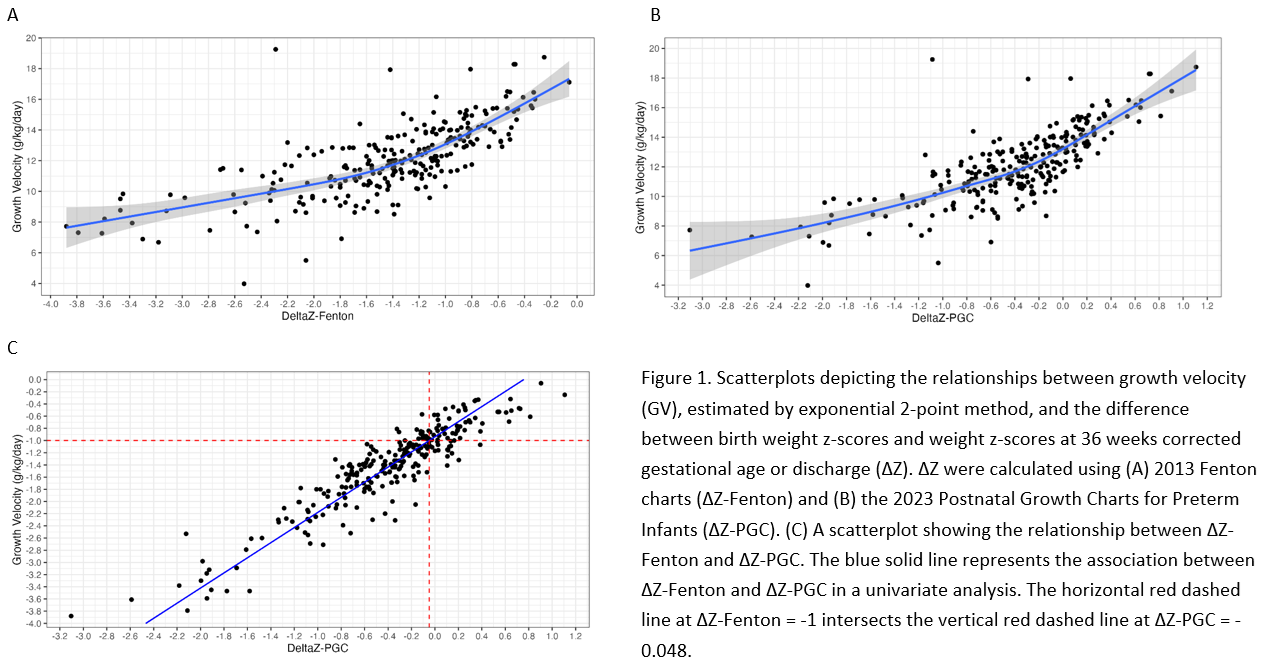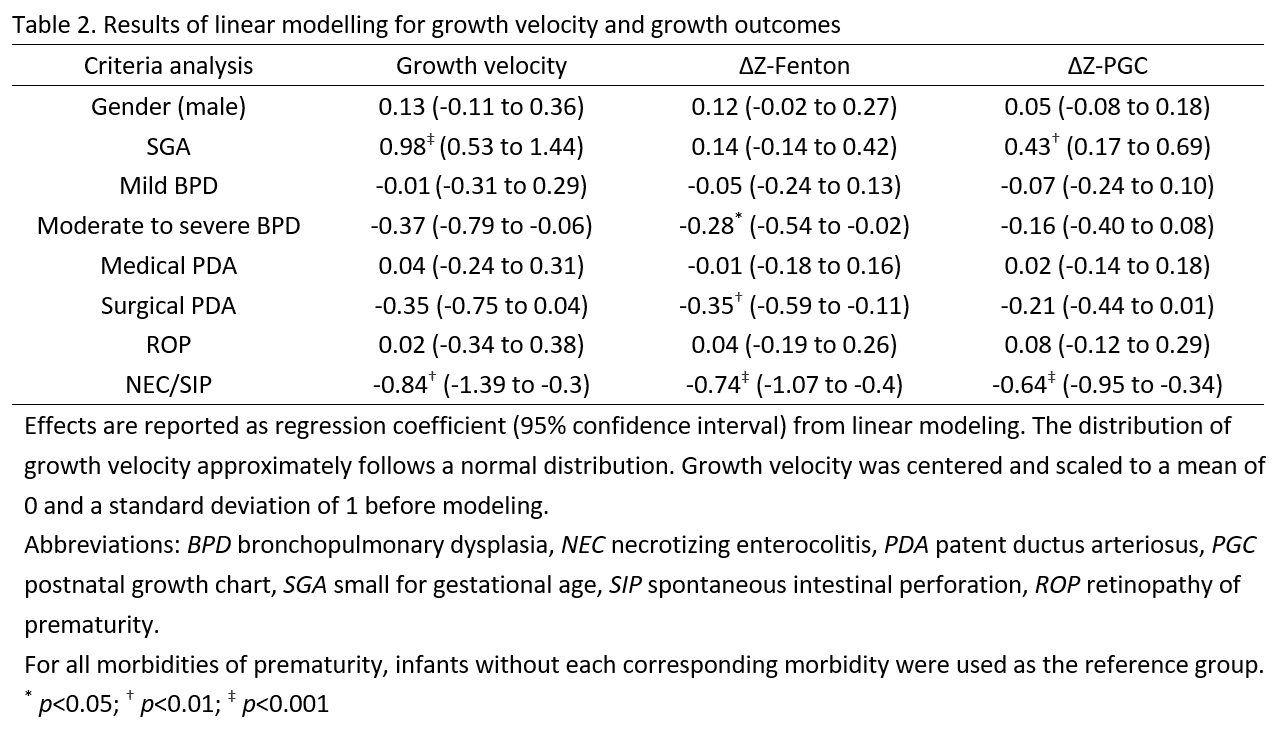Neonatal General 8: Growth, Nutrition and Feeding
Session: Neonatal General 8: Growth, Nutrition and Feeding
679 - Differential Associations of Delta Z-Scores and Growth Velocity with Morbidity In Preterm infants < 32 weeks and <1500 grams: Implications for Neonatal Care
Saturday, April 26, 2025
2:30pm - 4:45pm HST
Publication Number: 679.4179
Ting Hsuan Sung, National Yang-Ming Chiao-Tung University Hospital, yilan, Yilan, Taiwan (Republic of China); Fu-Sheng Chou, Kaiser Permanente Bernard J. Tyson School of Medicine, Riverside, CA, United States; Mei-Jy Jeng, National Yang Ming Chiao Tung University, Taipei, Taipei, Taiwan (Republic of China); Pei-Chen Tsao, Taipei Veteran General Hospital, Taipei, Taipei, Taiwan (Republic of China)
- TS
Ting Hsuan Sung, MD
Attending Physician
National Yang-Ming Chiao-Tung University Hospital
yilan, Yilan, Taiwan (Republic of China)
Presenting Author(s)
Background: Growth assessment is essential in the care of preterm infants. Growth velocity (GV) is considered the gold standard due to its inverse association with neurodevelopmental impairment (NDI). However, delta z-score (ΔZ) is commonly used to assess growth faltering, despite conflicting data on its association with NDI.
Objective: This study aims to correlate ΔZ calculated using two different growth reference tools with GV.
Design/Methods: Infants born between 2012-2020, with a birth weight (BW) < 1500g and a gestational age (GA) between 23-31 weeks in a level 4 NICU in Taiwan were included. GV from birth to 36 weeks corrected GA or discharge was estimated using the exponential 2-point method. ΔZ was calculated using the 2013 Fenton charts (ΔZ-Fenton) and the recently published 2023 Postnatal Growth Charts for Preterm Infants (ΔZ-PGC; PMID: 37726287). Linear regression models were developed to assess the differences in the association between growth-affecting morbidities of prematurity and GV, ΔZ-Fenton, or ΔZ-PGC.
Results: A total of 258 infants met the criteria, with an average BW of 1102±231g and a median birth GA of 28 (IQR: 27-29) weeks. Neonatal characteristics are shown in Table 1. The mean GV of these infants was 12.1±2.4g/kg/day. The relationships between GV and ΔZ-Fenton and between GV and ΔZ-PGC are non-linear (Fig. 1A, 1B). ΔZ-Fenton was highly correlated with ΔZ-PGC, with –1 of ΔZ-Fenton corresponding to -0.048 of ΔZ-PGC on a univariable analysis (Fig. 1C). In linear regression analyses, GV and ΔZ-PGC were both significantly associated with small for gestational age, necrotizing enterocolitis or spontaneous intestinal perforation (NEC/SIP). Conversely, ΔZ-Fenton was significantly associated with moderate-to-severe bronchopulmonary dysplasia, patent ductus arteriosus receiving surgical management, and NEC/SIP (Table 2).
Conclusion(s): The average GV in our dataset was lower than the recommended goal of 15-20 g/kg/day. The relationships between GV and ΔZ-Fenton and between GV and ΔZ-PGC were non-linear. Despite the high correlation between ΔZ-Fenton and ΔZ-PGC, their morbidity association profiles differed, with ΔZ-PGC sharing the same profiles as GV, unlike ΔZ-Fenton. Future studies are needed to determine whether ΔZ-PGC correlates with NDI in the same way as GV.
Table 1
.png)
Figure1A-C

Table2


